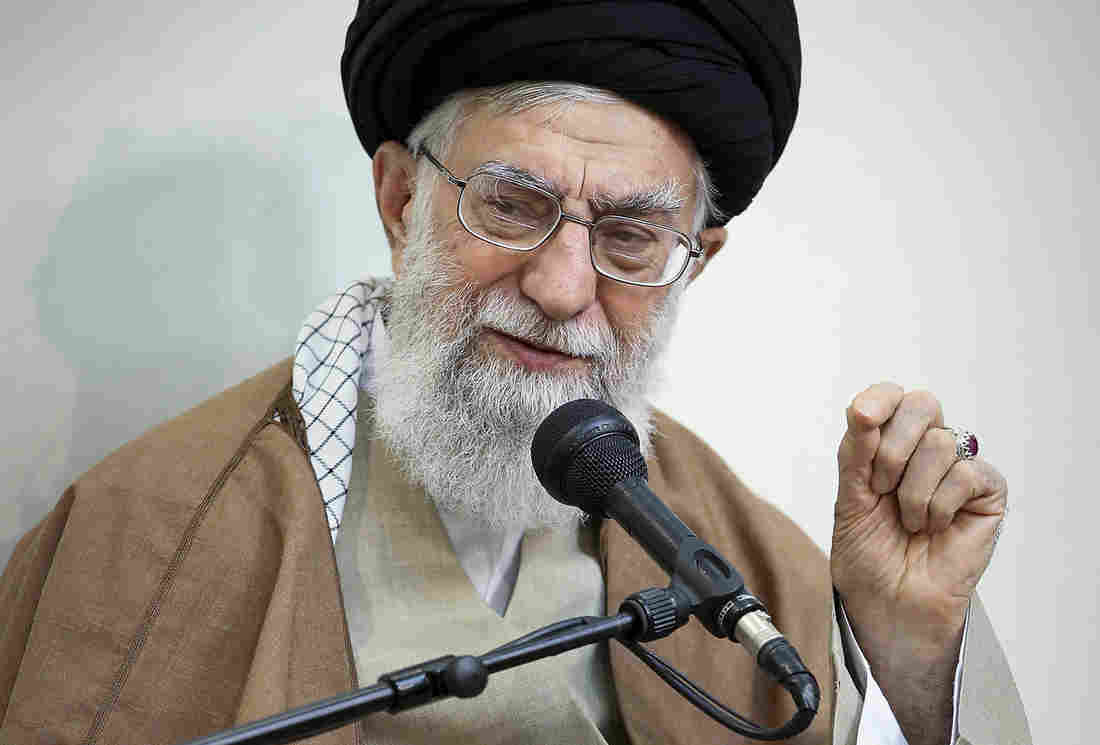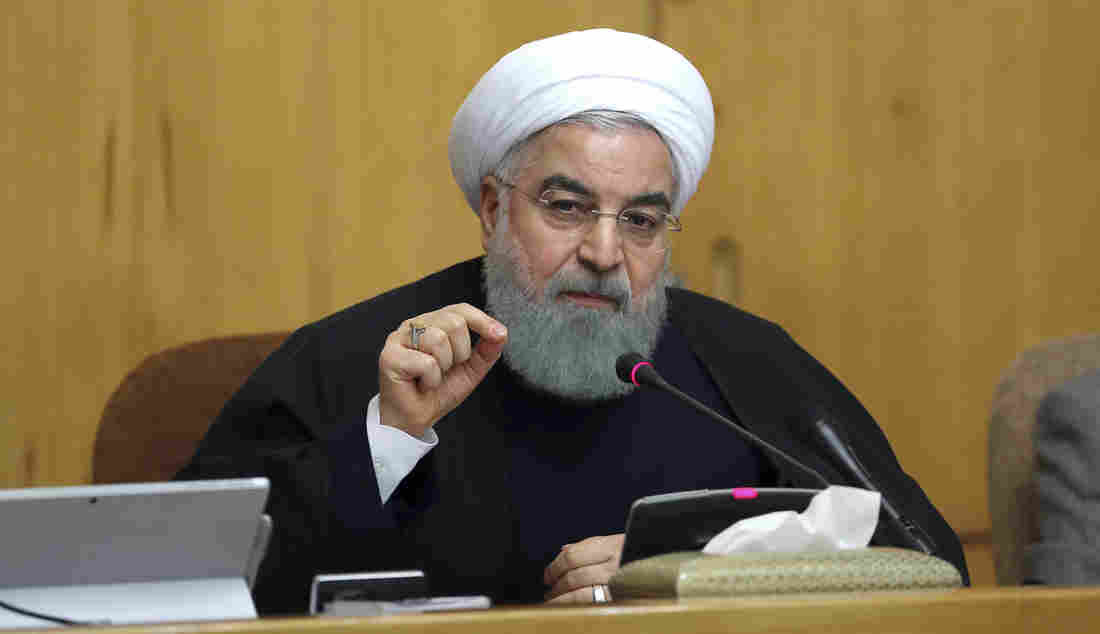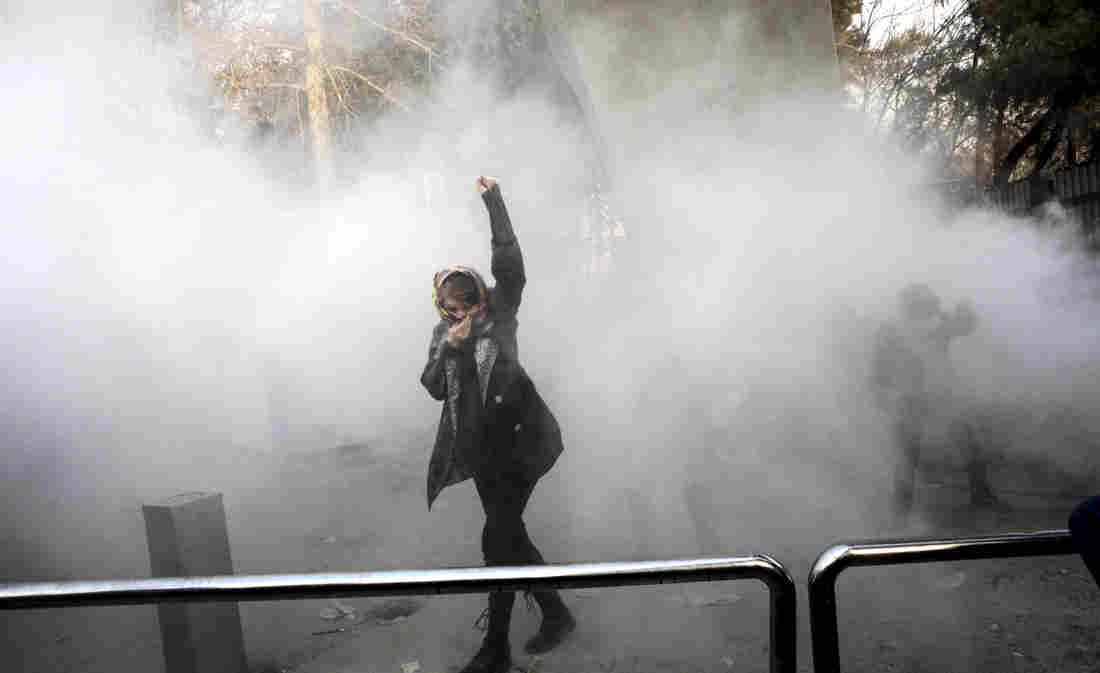You are here:
Home / Lingerie Events

Iran’s supreme leader, Ayatollah Ali Khamenei, speaks in a meeting in Tehran on Tuesday. Khamenei said the country’s enemies have meddled in recent protest rallies.
AP
hide caption
toggle caption
AP
![]()
Iran’s supreme leader, Ayatollah Ali Khamenei, speaks in a meeting in Tehran on Tuesday. Khamenei said the country’s enemies have meddled in recent protest rallies.
AP
Iran’s protests feature demonstrators upset with the country’s lackluster economy and nearly four decades of rule by hard-line Islamic clerics.
Those are the basics, but there is much more behind this latest round of unrest.
Iran is a complicated place, marked by multiple factions all trying to pull the country in different directions.
There is one supreme cleric in charge. But there is also an elected president and robust political debate. While not a democracy, neither is Iran a dictatorship.
In addition, most foreign journalists are barred from the country and the Iran government has shut down some social media channels inside the country.
Here’s a primer on some of the key players and what’s at stake for them:
Supreme Leader Ayatollah Ali Khamenei: The man who has the final word on all major decisions, Khamenei has consistently advocated deeply conservative positions at home and has been relentlessly critical of the West.
He doesn’t often comment on day-to-day developments, and issued his first remarks about the protests Tuesday, five days after they began.
“In the recent days’ incidents, enemies of Iran utilized various means – including money, weapons, politics and intelligence apparatuses – to create problems for the Islamic system,” Khamenei said in a brief statement posted on his official website.
The comment was very much in keeping with Khamenei, who has packed the government with conservative clerics and has long had close relations with the security forces.
Khamenei served two terms as president in the 1980s and then became the country’s supreme leader after the 1989 death of Ayatollah Khomeini, the man who established the Islamic Republic.
No current Iranian figure has played a more central role in the nearly four decades since the 1979 revolution. Khamenei is now 78, which prompts periodic speculation about his health. But he remains the nation’s dominant figure and no one doubts his hard-line attitude toward the protesters.

Iranian President Hassan Rouhani speaks in a cabinet meeting in Tehran on Sunday. After a wave of economic protests swept major cities, Rouhani said people have the right to protest, but those demonstrations should not make the public “feel concerned about their lives and security.”
Uncredited/AP
hide caption
toggle caption
Uncredited/AP
![]()
Iranian President Hassan Rouhani speaks in a cabinet meeting in Tehran on Sunday. After a wave of economic protests swept major cities, Rouhani said people have the right to protest, but those demonstrations should not make the public “feel concerned about their lives and security.”
Uncredited/AP
President Hassan Rouhani: Elected to a second four-year term last year, Rouhani portrays himself as a pragmatist who wants a more modern Iran that’s reaching out to the world.
The protests are seen as a major test for Rouhani.
The president faces rivals among the hardliners who would like to see the protests crushed. Yet he also faces criticism from moderates and liberals who say he’s a long-time pillar of the establishment and is unable or unwilling to make major changes to the system of clerical rule.
Rouhani was the leading Iranian voice in support of the 2015 nuclear deal with the United States and other world powers. While this resulted in the lifting of some sanctions, it has not brought significant economic gains for ordinary Iranians as Rouhani promised.
Rouhani has been targeted by many protesters, and he has acknowledged their right to demonstrate.
“According to the constitution and citizens’ rights, people are free to express their criticism and to protest,” Rouhani said in remarks broadcast on state television Sunday.
However, he also warned: “The government will show no tolerance for those who damage public properties, violate public unrest and create unrest in the society.”

A woman takes part in a protest inside Tehran University. Iran is experiencing its largest anti-government protests since the disputed presidential election in 2009.
AP
hide caption
toggle caption
AP
![]()
A woman takes part in a protest inside Tehran University. Iran is experiencing its largest anti-government protests since the disputed presidential election in 2009.
AP
The Protesters: The demonstrations broke out unexpectedly on Dec. 28 in the conservative, religious city of Mashhad, the second largest city in Iran. The protests appear to be a reaction to government proposals to cut subsidies that keep prices down, though demonstrators have also called for the ouster of the country’s leaders.
Some Rouhani allies accused the hard-liners of stoking the demonstrations to make Rouhani look bad.
“This began over economic issues,” Robin Wright, a long-time Iran watcher who writes for The New Yorker, told NPR’s Morning Edition. “Now it has taken on a political component, challenging not only the government of President Rouhani, but also the broader religious system.”
There’s no clear leader among the demonstrators, which spread around the country almost immediately. Nationwide, more than 20 people have been killed, one a member of the security forces, according to media reports in Iran.
Many note that the protests have not been centered in Tehran but scattered around the country, often in small cities. Protesters are largely people in their 20s complaining about economic hardships. That’s a change from the big protests in 2009, when Tehran residents led the charge and called for more personal freedoms. It could be a sign of more widespread, working class dissatisfaction.
Iran’s demographics are tilted toward the young, many of whom are seen as frustrated by the limited opportunities, the country’s relative isolation and the older, hard-line religious leaders who have been in power for decades.
Some of the areas experiencing violence also have complicated ethnic makeups, including Kurdish, Arab and Sunni minorities, hinting at long-standing grievances against the Shiite regime.
The Iranian Security Forces: In 2009, protests against the allegedly rigged results of the presidential election were crushed by Iran’s security forces. The question now is whether this time they will do the same.
Most powerful is the Iranian Revolutionary Guard Corps (IRGC). It’s basically an army that reports to Khamenei, with missiles, tanks and troops around the region. The IRGC also controls the street militias that help enforce clerical rule.
Security forces seem intent on limiting the unrest in Tehran. Media reports Tuesday, quoting a deputy governor of Tehran, said at least 450 people have been arrested in the city, the largest portion of the more than 600 arrested nationwide.
It’s important to remember that there is a connection between the Revolutionary Guard Corps and economics. In addition to being an army, the IRGC controls large companies and holds big financial interests. Iranians complain that money meant to help ordinary Iranians is being funneled to the IRGC instead.
These demonstrations are being described as the largest since the disputed presidential election in 2009. As those demonstrations spread, the IRGC and other security force branches were increasingly aggressive in dealing with the so-called Green Movement, which challenged the election results. The protests lasted months, and while figures varied, the death toll was in the dozens while thousands were arrested.
Greg Myre is a national security correspondent. Follow him @gregmyre1.
Larry Kaplow is NPR’s Middle East editor. Follow him @larrykaplow.
Share and Enjoy

Pressure and wind visualization of storm off the coast of New England on Thursday. (WindyTV.com)
Unforgiving cold has punished the eastern third of the United States for the past 10 days. But the most severe winter weather yet will assault the area late this week.
First, a monster storm will hammer coastal locations from Georgia to Maine with ice and snow. By Thursday, the exploding storm will, in many ways, resemble a winter hurricane, battering easternmost New England with potentially damaging winds in addition to blinding snow.
Forecasters are expecting the storm to become a so-called “bomb cyclone” because its pressure is predicted to fall so fast, an indicator of explosive strengthening. The storm could rank as the most intense over the waters east of New England in decades at this time of year. While blizzard conditions could paste some coastal areas, the most extreme conditions will remain well out over the ocean.
In the storm’s wake, the mother lode of numbing cold will crash south — likely the last but most bitter in brutal blasts since Christmas Eve.
The storm: How much snow and wind, and where
The responsible storm is forecast to begin taking shape off the coast of Florida Wednesday, unloading hazardous snow and ice in highly unusual locations not accustomed to such weather. The National Weather Service has already posted winter storm watches from Lake City, Fla. to Norfolk
It is then expected to rapidly intensify, buffeting the Mid-Atlantic beaches and eastern New England, where winter storm watches have also been issued.
The National Weather Service office serving northeast Florida and southeast Georgia cautions that a nasty mix of light freezing rain, light sleet and light snow is expected to develop Wednesday “with significant icing possible.”
In Charleston, one to three inches of snow and sleet is forecast Wednesday, where the Weather Service warns to “plan on difficult travel conditions.”
From Norfolk to the Maryland and Delaware beaches, including much of the southern half of the Delmarva Peninsula, 3 to 6 inches of heavy snow are predicted from Wednesday evening to Thursday afternoon.
GFS model shows accumulating snow from the Georgia-Florida border all the way up the East Coast to Maine.
Farther inland in the Mid-Atlantic, near Interstate 95, the storm’s exact track will be highly consequential. Current computer models suggest most, if not all, snowfall will occur east of Washington and Baltimore on Wednesday night into early Thursday. But small shifts to the west could bring some snow to these cities.
To the north, Philadelphia and New York have a better chance for a coating of snow, but — unless the storm edges closer to the coast — the more significant snow should remain to their east from Atlantic City to eastern Long Island, where at least four to six inches could fall late Wednesday to late Thursday.
By the time the storm reaches the ocean waters east of Long Island and eastern New England on Thursday, it will be explosively intensifying. The storm’s central pressure will have fallen 53 millibars in just 24 hours — an astonishing rate of intensification.
European model simulation of storm pressure drop between Wednesday and Thursday. (WeatherBell.com, adapted by CWG)
“Some computer models are projecting a minimum central air pressure of below 950 millibars at its peak, which would be nearly unheard of for this part of the world outside of a hurricane,” wrote Mashable’s Andrew Freedman. “For comparison, Hurricane Sandy had a minimum central pressure of about 946 millibars when it made its left hook into New Jersey in 2012.”
Winds will crank in response to this pressure drop, howling to at least 30 to 50 mph along the coast. Winds will be considerably stronger over the ocean — exceeding hurricane force — where enormous waves will form.

Peak six-hour wind gusts are forecast by the European model between 7 a.m. and 1 p.m. on Thursday. (WeatherBell.com)
In Boston, the Weather Service is predicting not only four to seven inches of snow but also winds strong enough to bring down branches. Throughout eastern Massachusetts and eastern Maine, the combination of wind and snow could create blizzard conditions, especially if the storm wobbles west.
“Our biggest concern is the potential for damaging wind gusts especially near the southeast New England coast,” the Weather Service tweeted. “Power outage risk followed by arctic air Fri/Sat a big concern!”
The cold in its wake: record-breaking

Temperature difference from normal forecast Saturday morning by American (GFS) model. Note these are deviations from average, not actual temperatures.
The storm’s enormous circulation will help draw several lobes of the polar vortex, the zone of frigid air encircling the North Pole, over the Mid-Atlantic and Northeast by Friday and Saturday. Wicked cold air sourced from Siberia, the North Pole and Greenland will all converge on the region.
Temperatures are forecast to be 20 to 40 degrees below normal, the coldest of the winter so far.
Most locations in the Mid-Atlantic and Northeast are predicted to set records for cold temperatures on Friday with highs in the single digits and teens.

National Weather Service high temperature forecast on Friday. Locations circled indicate coldest on record. (WeatherBell.com)
On Saturday morning, subzero cold is forecast over almost all of New England, with single digits in the Mid-Atlantic.

National Weather Service has forecast low temperature on Friday. Locations circled indicate coldest on record. (WeatherBell.com)
Winds, gusting to 30 mph, will make these areas feel 10 to 20 degrees colder.

Top wind gust is forecast for Friday evening from the American (GFS) model.
Finally, after one of the most intense cold spells of such duration on record in parts of New England — including Boston, temperatures are forecast to gradually thaw by early next week.

Share and Enjoy








